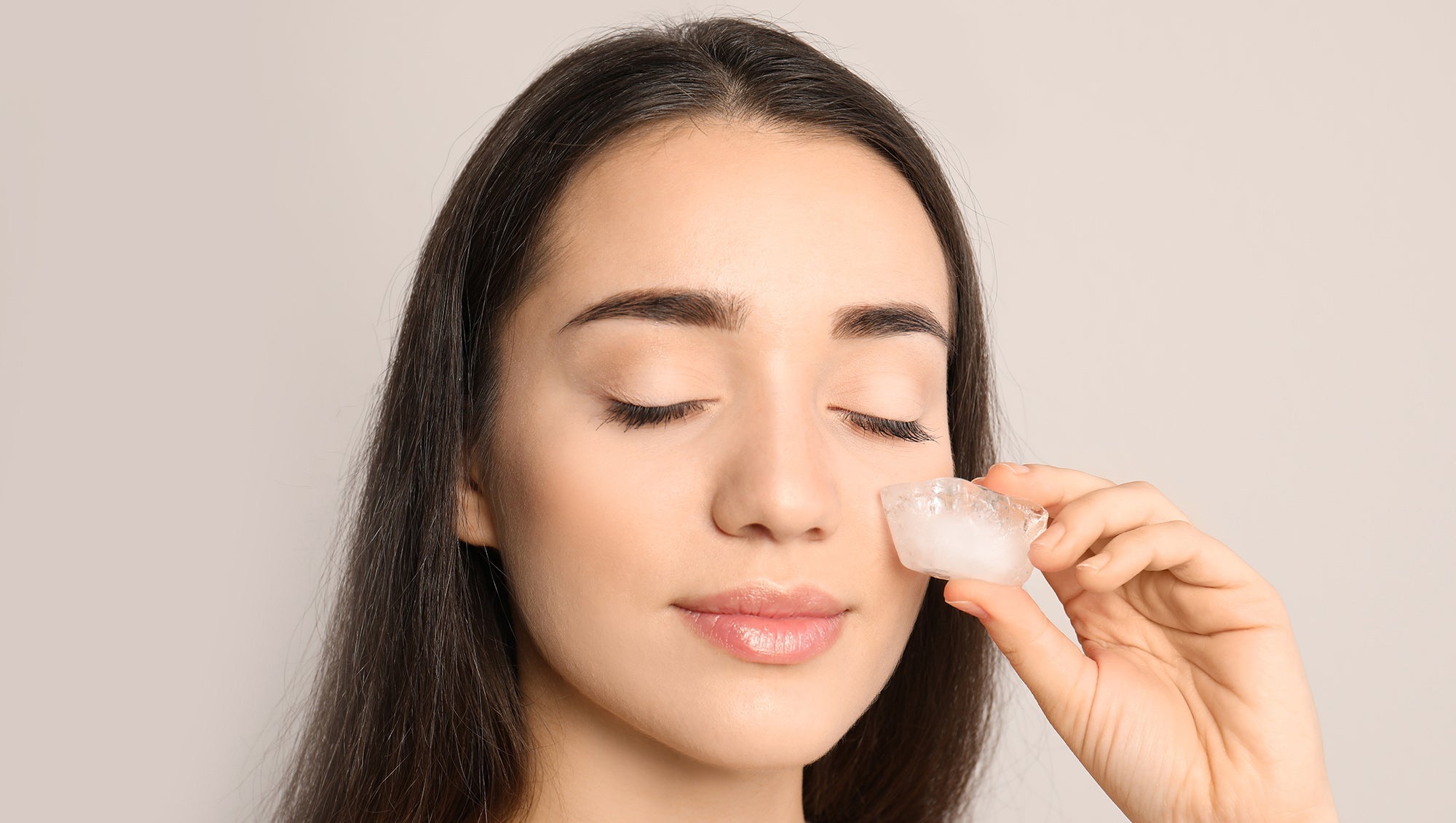When faced with a painful, swollen pimple, many people instinctively reach for ice. It’s an accessible, cost-effective remedy that seems like it should work - but does ice help pimples, or is it simply a skincare myth passed down through internet forums and late-night advice searches?
Let’s explore how ice on acne actually works, what it can and can’t do and how to incorporate it safely into a broader skincare routine for clearer, calmer skin. Understanding its role can help you manage breakouts more effectively - without relying on guesswork.
How Ice Works on Pimples
Applying ice to a pimple offers one key benefit: it helps reduce inflammation. When skin is irritated or swollen, ice constricts the blood vessels, which can temporarily minimise redness, reduce swelling and dull the sensation of discomfort. This makes it a useful option for cold treatment for acne, especially in the early stages of a breakout or when you need fast relief before a big day.
However, while ice may help reduce pimple inflammation, it won’t eliminate acne-causing bacteria, regulate oil production, or unclog pores. So, while it can be helpful as part of a calming strategy, it’s not a standalone solution.
When and How to Use Ice on Acne Safely
When used correctly, ice can be a helpful way to soothe irritated skin and calm down a breakout - but it must be used with care.
Here’s how to do it:
-
Always wrap the ice cube or ice pack in a clean cloth or paper towel.
-
Apply to the pimple for 30 seconds to 1 minute at a time.
-
Repeat a few times daily, allowing the skin to rest in between applications.
-
Avoid applying ice directly to the skin, as this can cause irritation or even ice burns.
Before applying ice, it's a good idea to cleanse the skin gently. The allmedic Acne Clear Cleanser is specifically formulated for acne-prone skin, helping to remove excess oil and impurities without overdrying - a perfect first step before trying at-home remedies.
What Ice Can’t Do: Understanding Its Limitations
While ice can help calm a breakout in the short term, it’s important to understand its limits. It does not target the root causes of acne, such as clogged pores or bacterial overgrowth and should not replace a consistent skincare routine tailored to your skin type.
To enhance your post-ice routine, soothing products can help settle the skin further. The allmedic Acne Clear Soothing Spray is a gentle, non-sticky mist that supports skin that’s feeling reactive or stressed. Likewise, the allmedic Luxe Soothing Balm provides a comforting layer of hydration, making it a good companion to ice-based methods.

Applying ice on acne may help reduce inflammation and calm irritated skin when breakouts flare up.
Integrating Ice with a Broader Acne Routine
For those navigating ongoing breakouts, ice therapy for breakouts can offer relief, but results are best when it's used alongside science-backed skincare products.
Once any swelling or irritation has subsided, incorporating an exfoliating product such as the allmedic Acne Clear Scrub may assist in removing dead skin cells and helping to prevent further breakouts. It’s best used 2 to 3 times a week and not directly on active, inflamed spots.Lastly, for ongoing maintenance and detoxification, the allmedic Detoxifying Skin Lotion works to draw out impurities and improve skin clarity, making it a useful addition for those managing acne-prone skin over the long term.
Final Thoughts: Is Cold Treatment for Acne Worth It?
So, does ice help pimples? Yes, in some ways. It can ease inflammation, reduce redness and offer temporary relief. However, it's not a cure. For meaningful improvements, especially in cases of ongoing acne, a targeted skincare approach is essential.
That’s where Allmedic’s skincare range comes in, offering a range of products formulated to support calming acne-prone skin, improving skin resilience and promoting a clearer complexion over time. Interested in supporting your skin with evidence-based products? Explore Allmedic’s acne solutions today.
FAQs
Does putting ice on a pimple overnight work?
Leaving ice on the skin overnight isn’t safe and can cause irritation or even frostbite. A better approach is to apply ice in short intervals throughout the day, which can help reduce inflammation without damaging the skin’s surface.
Is using ice good for acne-prone skin?
Ice can be helpful for acne-prone skin when used carefully. It works best for calming inflamed or swollen breakouts and can temporarily reduce redness. However, it won’t treat the underlying causes of acne, so it should be used alongside a targeted skincare routine.
Can ice reduce swelling from acne?
Yes. Ice helps constrict blood vessels, which reduces blood flow to the area and can visibly reduce swelling and discomfort from active acne. It’s especially useful for large, painful spots.
How long to apply ice to a pimple?
Wrap ice in a clean cloth and apply for 1 to 2 minutes at a time. Repeat up to 3 times a day, allowing the skin to rest between applications.
What happens when you put ice on a spot?
Ice temporarily numbs the area, reduces inflammation and calms the skin. It offers quick relief and can make blemishes appear less red and swollen.


